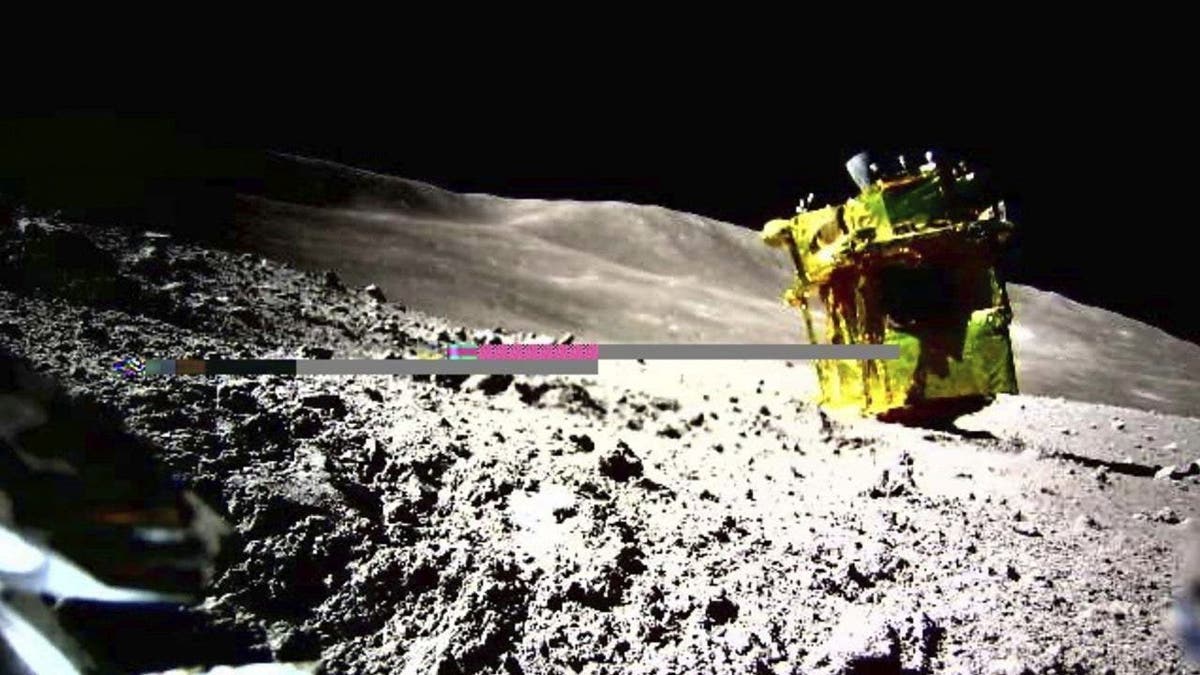The Japanese mission to put a lunar spacecraft on the surface of the moon was a rousing success — though the landing was headfirst.
The Japan Aerospace Exploration Agency (JAXA) announced the situation at a press conference on Thursday, explaining that the Smart Lander for Investigating Moon (SLIM) spacecraft managed to touch down on the tiny patch of the moon’s surface chosen for the mission.
“Analysis of the data acquired before shutting down the power confirmed that Slim had reached the Moon’s surface approximately 55m east of the original target landing site,” said JAXA.
JAPAN SHUTS OFF SLIM MOON LANDER’S BATTERY IN HOPES OF ‘POSSIBLY’ RESTARTING IT LATER
Hitoshi Kuninaka, left, director-general of JAXA’s Institute of Space and Astronautical Science, speaks during a press conference to explain the mission results of the Smart Lander for Investigating Moon in Tokyo. (Kazuhiro Nogi/AFP via Getty Images)
The space agency acknowledged that “an abnormality in the main engine affected the landing attitude of the spacecraft,” which complicated the touchdown.
That abnormality caused the spacecraft to land upside down — a situation shown in photos from the lunar surface.
The hiccup did not dampen JAXA’s enthusiastic celebration of the successful landing, which they described as “ground-breaking.”
JAPAN BECOMES 5TH COUNTRY TO REACH MOON AFTER ITS SPACECRAFT LANDS ON LUNAR SURFACE

This image taken by a lunar excursion vehicle shows the Smart Lander for Investigating Moon, or SLIM, on the moon’s surface. (JAXA/Takara Tomy/Sony Group Corporation/Doshisha University via AP)
“The accomplishment of Lev-1’s leaping movements on the lunar surface, inter-robot communication between Lev-1 and Sora-Q, and fully autonomous operations represent [a] ground-breaking achievement,” the space agency said.
Before landing on Saturday, SLIM deployed two small robots called LEV-1 and LEV-2, which captured and transmitted the images of the spacecraft on the lunar surface.
The robots’ transmissions were the first of their kind and paved the way for future investigations of the moon.
CLICK HERE TO GET THE FOX NEWS APP

From left, Daichi Hirano, researcher at JAXA; Hitoshi Kuninaka, director-general of the Institute for Space and Astronautical Science (ISAS); Shinichiro Sakai, project manager for JAXA’s Smart Lander for Investigating Moon; and Masatsugu Otsuki, associate professor at ISAS, are shown during a press conference in Tokyo. (AP Photo/Eugene Hoshiko)
“It would be regarded as a valuable technology demonstration for future lunar explorations, and the acquired knowledge and experience will be applied in upcoming missions,” said JAXA.
Due to the unorthodox landing, SLIM’s solar panels are facing the wrong way and are unable to recharge the spacecraft.
Scientists believe that there’s a chance this energy deficiency could change in the coming days as the moon enters its daytime cycle.